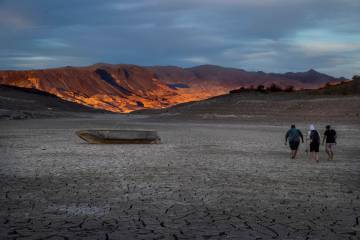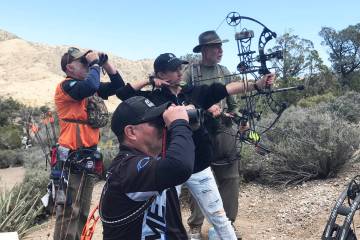Youth feed hunting ‘Hunger’ with archery
During its coverage of the 2012 Summer Olympic Games, NBC fed American viewers a steady diet of beach volleyball, sprinkled with periodic coverage of indoor volleyball to provide us with variety. On the network’s cable feed, however, the archery competition took top honors for viewership.
Why the significant interest in competitive archery?
Some have attributed the surge in interest to the fictional exploits of Katniss Everdeen, teenage heroine of the popular movie “The Hunger Games,” released in March 2012. In the movie, Everdeen provided for her family and won the so-called games by using not only her skills as an archer but also her skills as a bowhunter. Everdeen’s accomplishments won the hearts of viewers, especially those of America’s youth.
In late November, “The Hunger Games: Catching Fire,” a second installment to the series, hit theaters and seems to be adding fuel to the archery fire. All one has to do is visit the archery department at your local outdoor store and look who is doing the shopping. A whole lot of kids are asking for a bow and arrows.
“ ‘The Hunger Games’ franchise has influenced teen culture in numerous ways, but the sport of archery could be the biggest winner of all,” USA Archery, the governing body for Olympic archery, said in a post on its website. “… One thing is clear: Archery’s popularity is surging, and the sport is showing sustained growth that continues to impress.”
Individual memberships in USA Archery have grown from 4,185 in November 2011 to nearly 8,600 in November 2013, an increase of 105 percent. In the past 12 months alone, individual membership has increased 54 percent, the organization noted.
Other movies credited with having an influence on the growth of archery are “Brave” and “The Avengers,” but often overlooked is the influence of community archery programs such as those offered by the Clark County Parks and Recreation Department or the National Archery in the Schools Program.
The National Archery in the Schools Program is a nationally accredited curriculum that plugs into the normal rotation of subjects covered in a physical education class. It is available for grades four through 12. The big difference between the NASP approach and traditional archery offerings found in a school setting is that NASP-certified instructors teach their student archers proper shooting technique in addition to safety guidelines.
Handing someone a bow and arrow and letting him fend for himself is not enough.
As with other sports such as basketball or golf, archery success comes from learning proper technique and form. An archer who experiences success likely will stay with the sport, but the opposite also is true. The key is developing muscle memory and doing the same thing the same way every time one shoots an arrow at a target.
NASP first came to Nevada in August 2009 and is managed under the auspices of the Nevada Department of Wildlife. While the program’s early focus was on Southern Nevada, Nevada NASP now can be found in more than 50 schools throughout the state. Each February, the NDOW hosts a state NASP tournament in conjunction with the World Archery Festival at the South Point. The tournament has grown from about 130 participants in 2010 to nearly 500 shooters in 2013.
Another overlooked factor in the growing popularity of archery might be the short supply and high cost of firearms ammunition that is limiting recreational shooting activity.
Rather than shooting their hard-to-find ammunition, some firearms enthusiasts are turning to archery in an effort to satisfy their desire to shoot recreationally. The advantage of archery is that you can shoot your arrows over and over without incurring the cost of ammunition.
The cost to get started in archery varies from “ouch” to “dadgum,” but going cheap will not get you where you want to be. At the same time, buying the most expensive bow in the shop isn’t necessarily the way to get started, either. Be prepared to shop around and take the time to talk with people who know bows but aren’t necessarily trying to sell you a bow. For young shooters, a good place to start is with the Genesis bow by Matthews, the same bow used in the NASP program.
Freelance writer Doug Nielsen is a conservation educator for the Nevada Department of Wildlife. His “In the Outdoors” column, published Thursday in the Las Vegas Review-Journal, is not affiliated with or endorsed by the NDOW. Any opinions he states in his column are his own. He can be reached at intheoutdoorslv@gmail.com.






















